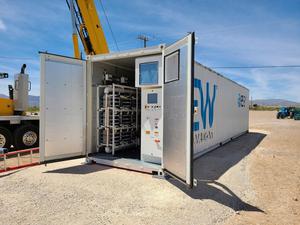
As other tech firms shed staff, Beaverton-based Biamp Systems is hiring and set on growth thanks to investments the conferencing and AV tech company made early in the pandemic.
"We see (the business) continuing to grow (next year). We are a unicorn in the woods in Portland," said CEO Rashid Skaf. "Where we play, our job is to connect people through these AV experiences. To bring people together.”
Biamp Systems has 29 open roles on its website for jobs across its global footprint and continues to see high demand for products. Its leadership team focuses on long-term growth as other tech companies shrink and grapple with supply backlogs.
It’s an example of the company’s ability to capitalize on the shift toward hybrid office or learning environments as well as returning to public gathering spaces.
The business grew 30% over the last 18 months and it expects to continue to grow in 2023 regardless of the broader economic uncertainty.
Biamp is bucking the trend among many tech companies lately. The company invested heavily early in the pandemic in both manufacturing and distribution, expanding its production line and its local warehouse. Its employee count has also grown to 994, it is not backing off those investments.

What does Biamp Systems do?
The company started in 1976 and has its roots in the music business. However, by the early 2000s it shifted completely to manufacturing digital audio equipment for corporate and government use. In 2017, the company got new private equity owners when Highlander Partners acquired the majority of the business from Lomar Corp.
Skaf, who is part of Highlander, came in as CEO.
“This is a story of good to great. Biamp was a solid company for 40 years and had a good brand and was well respected in the industry,” he said, adding that his job was to build on that foundation. “It’s how to take a good company and make it great and grow at an outpaced pace, much faster than the industry, faster than the market and get an unfair share of the market.”
The company makes audio-visual conferencing technology, microphones, public address systems, communications software and support services that are scalable from conference rooms all the way up to football stadiums. Customers are in business, education, entertainment and government. Several of its products are certified to work with popular video conference platforms like Zoom and Teams.
Many people use the company’s technology without knowing it, and the company even has a system in the White House.
Pandemic strategy to survive and thrive
At the outset of the Covid-19 pandemic the company paused for 90 days to understand what was happening in world and what business would look like. In that timeframe there were no layoffs and the company hasn’t made cuts since.
What it did do was communicate clearly with employees even when the leadership didn’t have answers, said Skaf.
When it became clear that the world was shifting to remote and virtual work, the company moved to take advantage of it. This meant bulking up on components and other finished products to not only stay ahead of what was expected to be huge demand but also stay ahead of expected complications in the supply chain.
Like many manufacturers, the company usually works on a just-in-time basis and doesn’t keep a lot of inventory. But that changed because the team anticipated suppliers would be delayed getting back up to speed, so Biamp stocked up.
“The goal was to make sure we could supply when others couldn’t,” Skaf said. “We made the bet and the board agreed to spend the capital. We upgraded the factory at the end of the year in a pandemic and the beginning of a supply chain crisis.”
Biamp now has a roughly 80,000-square-foot factory in Beaverton plus a local distribution warehouse. This is in addition to a manufacturing facility in Pennsylvania. Locally, the company runs three manufacturing shifts.
In the last five years the business has tripled through both organic growth and acquisitions.
Looking ahead to next year, Skaf’s plan is to continue to grow. The broader economy may sputter and certain industries will have challenges, but he sees Biamp’s place in the market as central and one that will help it win.
The company has new products set to launch next year.







